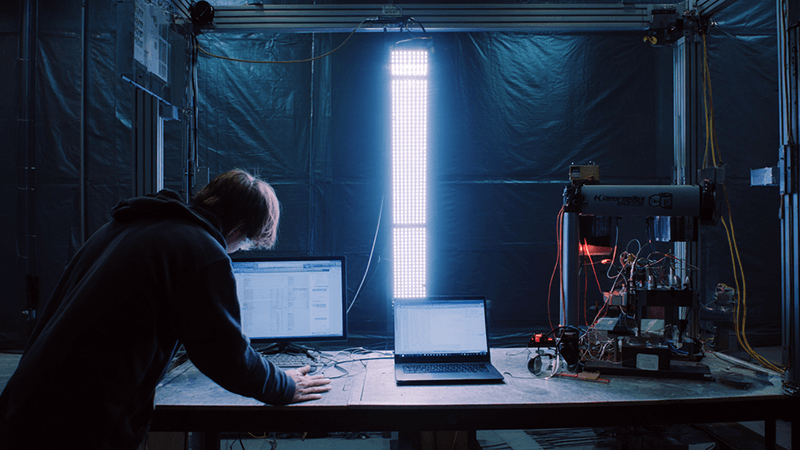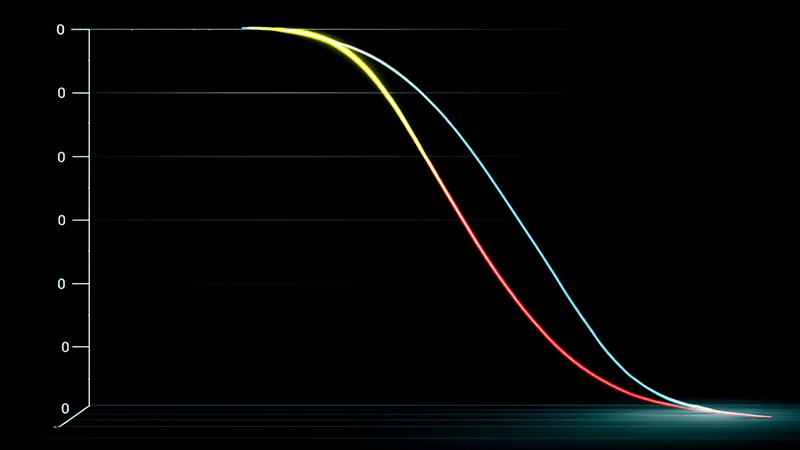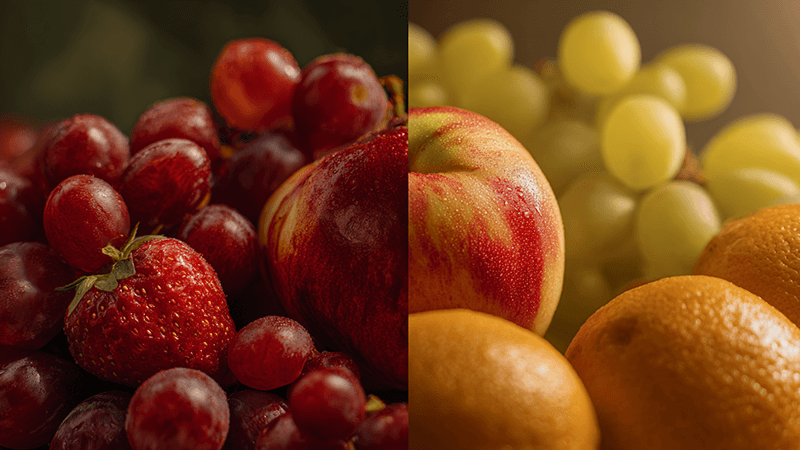Are your LED floodlights failing sooner than promised? This costs you money, time, and damages your reputation. You need to know how to verify quality before you buy.
Key reliability tests for LED floodlights include LM-80 for analyzing lumen depreciation, TM-21 for projecting the effective lifetime, and IP ratings for environmental durability. You must verify these standards with independent, third-party lab reports to ensure the product you receive matches the product you were promised.

I’ve spent my entire career in the LED lighting industry, starting on the factory floor and eventually building my own manufacturing business. I have seen every trick suppliers use to sell subpar products. It’s frustrating when you can’t trust the specs on a datasheet. But you don’t have to guess.
Let’s break down the essential testing standards. This knowledge will empower you to cut through the marketing claims and source reliable floodlights that perform as expected. It’s time to protect your projects and your bottom line.
How Long Should an LED Floodlight Last?
Don’t you hate it when a floodlight rated for 50,000 hours fails in just a year? This unreliability hurts your projects and your credibility. Understanding lifetime testing standards is key.
A quality LED floodlight should last between 30,000 to 100,000 hours, defined as its L70 lifetime. This depends on the entire system, including the LED chips, driver, and housing. Always demand verified test data to confirm these claims, as marketing numbers are often inflated.

When a supplier claims a 50,000-hour lifetime, you need to ask more questions. That number is often misleading. The real measure of an LED’s useful life is its L70 rating, which is the point at which the light output has decreased to 70% of its initial brightness. The light doesn’t just turn off; it becomes too dim to be effective.
Understanding L70 and Lumen Depreciation
All LEDs dim over time. This process is called lumen depreciation. The speed of this depreciation depends on the quality of the LED chip and how well the fixture manages heat. A well-designed floodlight will manage heat effectively, slowing down this process. A poorly designed one will overheat, causing the LEDs to dim much faster and fail prematurely. This is why a simple "50,000-hour" claim without supporting data is a red flag.
The Role of LM-80 and TM-21 Reports
So, how do you verify a lifetime claim? You ask for two specific reports: LM-80 and TM-21.
- LM-80 is a test that measures the lumen depreciation of the LED chips themselves. The chips are tested for at least 6,000 hours under specific conditions.
- TM-21 is a calculation method. It takes the data from the LM-80 report and uses it to project the L70 lifetime.
Many suppliers try to pass off their own internal "accelerated aging" tests as proof of lifetime. These are unreliable. I always insist on seeing the official LM-80 test report for the exact LED package used and the corresponding TM-21 projection.
Don’t Forget the Driver and Housing
The lifetime of a floodlight is not just about the LED chips. The driver, which is the power supply, is often the first component to fail. Always ask the supplier for the driver’s own lifetime calculation report. Furthermore, for outdoor floodlights, the housing is critical. If its Ingress Protection (IP) rating is fake, water and dust will get inside and destroy the electronics. I once had a client whose entire project of 200 floodlights failed within six months of installation near a coast. The supplier claimed an IP65 rating, but a quick inspection showed poor seals. The salt and moisture got in and corroded everything. Always ask for an IP rating certificate from a certified lab like SGS or TÜV.
| Standard |
What It Measures |
What to Ask For |
| LM-80 |
Lumen depreciation of the LED package |
Official report from a third-party lab |
| TM-21 |
L70 lifetime projection based on LM-80 data |
The calculation report using the LM-80 data |
| IP Rating |
Ingress Protection against dust and water |
Certificate from TÜV, SGS, or similar |
| Driver Life |
Estimated lifetime of the power supply |
Manufacturer’s lifetime calculation report |
What Is a Good CRI Rating for LED Lights?
Are colors looking dull or unnatural under your new lights? This can make a high-quality space look cheap. You need to understand the Color Rendering Index (CRI) to fix it.
A good CRI rating is above 80 for general outdoor and most commercial lighting. For applications where color accuracy is crucial, like retail displays or art installations, a CRI of 90 or higher is necessary to make colors appear vibrant and true-to-life.

The Color Rendering Index (CRI) is a simple but powerful metric. It tells you how accurately a light source reveals the true colors of an object compared to a natural light source like the sun. Thinking about CRI is not just a technical detail; it directly impacts the perceived quality of a space and the objects within it.
What CRI Actually Measures
CRI is measured on a scale from 0 to 100. A light source with a CRI of 100, like daylight, shows colors perfectly. A low-CRI light source, like some old streetlights with a CRI below 70, can make colors look washed out or distorted. A red car might look brownish-orange, which can be a problem in a car park or dealership. For general-purpose floodlighting, a CRI of 70 is often considered the minimum, but I always push for 80+ to ensure a good level of quality.
Choosing the Right CRI for Your Application
The right CRI depends entirely on where the light will be used. For a warehouse or a basic security application, CRI 70 might be enough. But for a building facade, a public park, or a retail space, you need better color rendering. I worked with a client on a high-end commercial building. They initially considered cheaper floodlights with a CRI of 75 to save on budget. I showed them a side-by-side comparison. Under the CRI 75 lights, the beautiful stonework on the building looked flat and lifeless. Under the CRI 90 lights we proposed, the rich textures and natural colors of the stone stood out. They immediately understood the value. The small extra cost for high-CRI lights made a huge difference to the project’s final appearance.
Beyond CRI: Considering TM-30
While CRI is the industry standard, a more advanced metric called TM-30 is gaining traction. TM-30 is more comprehensive because it measures not only color fidelity (how accurate the colors are) but also color gamut (how saturated or intense the colors appear). For a purchasing expert like you, just asking a supplier for TM-30 data shows that you are knowledgeable and serious about quality. It can be a good way to separate the expert suppliers from the ones who just sell boxes.
| CRI Range |
Common Application |
Perceived Quality |
| 70-80 |
Street lighting, storage areas |
Acceptable, but colors may appear slightly dull |
| 80-90 |
Offices, commercial spaces, quality outdoor |
Good color rendering, suitable for most tasks |
| 90+ |
Retail, museums, medical, high-end residential |
Excellent color accuracy, vibrant and true-to-life |
What Is the LM-79 Standard?
Do the floodlights you receive seem dimmer than what you ordered? This gap between promised and actual performance is a common and frustrating problem. LM-79 testing is the only way to verify performance.
LM-79 is the standard method for testing the complete performance of an LED product. It provides verified measurements for total light output (lumens), luminous efficacy (lumens per watt), power consumption, power factor, and color qualities like CRI and CCT.

Think of an LM-79 report as a birth certificate for a light fixture. It provides a complete, verified snapshot of the luminaire’s performance right out of the box. It’s different from LM-80, which only tests the LED component over time. LM-79 tests the entire system—the LEDs, driver, optics, and housing—working together. For me, an LM-79 report from a reputable third-party lab is non-negotiable when evaluating any new lighting product.
Key Metrics Measured by LM-79
An LM-79 report is packed with crucial information that helps you cut through marketing fluff. It measures the fundamental performance characteristics of the light. These include the total luminous flux (how much light is actually produced), the input power (how much electricity it consumes), and luminous efficacy (how efficiently it converts that electricity into light). It also verifies all the color characteristics, including CRI and CCT (Correlated Color Temperature).
How to Verify a Genuine LM-79 Report
A real LM-79 report comes from an accredited laboratory. When a supplier sends you one, check the details carefully. The report should clearly state the lab’s name, the date of the test, and the exact model number of the product being tested. Pay close attention to the testing conditions, such as the ambient temperature. A light will perform better in a cold lab than it will in a hot real-world environment. Honest suppliers provide reports that reflect realistic conditions.
Spotting Common Deceptions
This report is your best tool against two common deceptions: exaggerated lumen output and fake power factor (PF) values.
- Luminous Flux (Lumens): A supplier might claim 15,000 lumens, but the LM-79 report might show it only produces 12,000. This is a very common issue. The report gives you the ground truth.
- Power Factor (PF): PF tells you how efficiently the luminaire uses the electricity it draws. A PF value close to 1.0 is ideal. A low PF (e.g., below 0.9) means energy is being wasted, which increases operational costs. The LM-79 report will list the measured PF. As a good practice, I also recommend using a simple handheld power meter to test samples you receive. If the measured power factor is significantly lower than what is stated on the report, you know the supplier is not being honest about their components.
| LM-79 Metric |
What it tells you |
Red Flag Example |
| Total Luminous Flux |
The actual amount of light produced (lumens) |
Advertised as 15,000 lm, but report says 11,500 lm |
| Luminous Efficacy |
How efficiently it converts electricity to light |
A high lumen claim but low efficacy (e.g., <90 lm/W) |
| Power Factor (PF) |
How efficiently it uses drawn power |
Claimed as PF >0.95, but report or meter shows 0.82 |
| CCT & CRI |
The color temperature and color rendering quality |
Product is specified as 4000K, CRI 80, but report shows different values |
What are the FDA lighting requirements?
Sourcing for a food processing plant and worried about compliance? Using the wrong light fixtures can lead to contamination risks and costly shutdowns. Understanding food-safe lighting standards is essential.
The FDA does not certify lights directly but requires that fixtures in food facilities be shatterproof and easily cleanable. To meet these rules, you must look for lights with certifications like NSF/ANSI 2, which ensures they are safe for use in food preparation areas.

When you are sourcing lighting for a food or beverage processing facility, the rules are different. Safety and sanitation are the top priorities. A broken light or a dirty fixture can contaminate products, leading to expensive recalls and shutdowns. The FDA sets the rules for the facility, and the facility manager is responsible for ensuring every component, including the lighting, is compliant.
Key Features of Food-Safe Lighting
To be considered "food-safe," a light fixture needs specific design features.
- Shatter-Resistant: The lens or cover must be made of a non-glass material like polycarbonate to prevent glass shards from falling into the food production line if the fixture is hit.
- Easily Cleanable: The housing should be smooth, without any small cracks or crevices where bacteria, dust, or food particles can accumulate.
- Corrosion Resistant: The materials must withstand harsh cleaning chemicals and frequent, high-pressure washdowns.
- Sealed Design: The fixture needs a high IP rating, typically IP66 or even IP69K, to prove it is sealed against water from high-pressure jets.
Understanding NSF Certification
The most important certification to look for in this category is NSF/ANSI Standard 2: Food Equipment. When a light fixture is NSF certified, it means an independent organization has verified that its design and materials are safe for use in a commercial kitchen or food processing environment. It confirms the fixture is non-toxic, corrosion-resistant, and can be cleaned and sanitized easily.
The Broader Issue: Fake Certifications
The need for a legitimate NSF certificate highlights a much bigger problem in the lighting industry: fake certifications of all kinds. Just as a supplier might falsely claim NSF approval, they regularly fake critical safety certifications like UL, ETL (for North America), or CE (for Europe). This is extremely dangerous. A product with a fake safety mark has not been tested for fire or electrical shock risk.
I have a very strict process for this. I never accept a PDF certificate as final proof. First, I ask for the certificate file. Then, I take the certificate number and go directly to the official website of the issuing body, like the UL Solutions online database or TÜV’s Certipedia. I search for that number. If it doesn’t appear, or if the product details in the database don’t match the product I’m buying, I walk away. This simple verification step has saved me and my clients from countless safety risks and financial losses.
| Certification |
What it Means |
How to Verify |
| NSF/ANSI 2 |
Suitable for food processing environments |
Check the NSF Certified Products database online |
| UL / ETL |
Meets North American electrical safety standards |
Search the certificate number on the UL/Intertek website |
| CE |
Meets European safety and health standards |
Ask for Declaration of Conformity and supporting test reports |
| IP69K |
Protects against high-pressure, high-temperature water |
Request the third-party test report from an accredited lab |
Conclusion
Verifying floodlight quality is simple. Always demand and check third-party test reports for lifetime (LM-80/TM-21), performance (LM-79), and safety (UL/NSF) to ensure you get what you pay for.